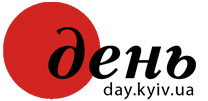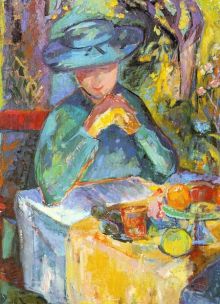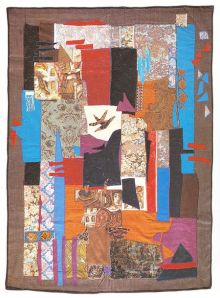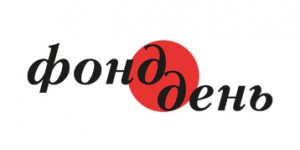Ivanna Nyzhnyk-Vynnykiv belongs to a generation of Galician artists who fled the persecution in their homeland and migrated to the West after the World War II.
The artist had to realize her great creative potential in a foreign land by working in France for nearly 50 years. Her paintings, tapestries, and pottery, that were displayed in the most prestigious art salons in Paris in the 1950-60s, were extremely popular among French public, and such outstanding representatives of the then artistic elite from Ecole de Paris as Pablo Pocasso and Marc Chagall spoke approvingly of them.
“Ivanna Nyzhnyk-Vynnykiv shows herself boldly as a modern artist with her colors, compositions, and the universal language she speaks, while never forgetting about Ukraine,” wrote French critic and poet Francois Legrand.
Meanwhile, the artist’s name was suppressed for many decades of the totalitarian regime. Her works at the National Museum collection were destroyed and her contacts with the native Halychyna were cut.
After Ukraine gained independence, Nyzhnyk-Vynnykiv could “return” to her homeland posthumously. After the artist’s death in 1993, the fate of her artistic heritage was taken care of on the state level by the National Commission for Returning Cultural Values to Ukraine and the Commission for Cultural and Spiritual Revival at the Verkhovna Rada of Ukraine. Thanks to these organizations, all artistic heritage of the artist (a total of 235 works, an archive, and a library) was transferred from France to the National Museum in Lviv in 1995. That is also the year when the artist’s ashes were buried at the Yanovsky Cemetery.
The exhibition, organized by the National Museum in Lviv and dedicated to the centennial anniversary of the artist’s birthday, represents her rich artistic heritage to such great extent for the first time.
The early period of her creative work, which took place in Lviv, her hometown, is displayed at the exhibition in a very fascinating way. After graduating from the Ukrainian female gymnasium run by the Basilian order of nuns (1921-29), Nyzhnyk-Vynnykiv made her first steps in art under the guidance of her great teacher Oleksa Novakivsky, whose school she attended from 1929 to 1935. Having a great artistic temperament, she immediately showed herself as one of the ablest students. Her paintings that were displayed at Lviv exhibitions in the 1930s were an object of vivid discussions at the pages of Galician press. Art critics described her as “showing great promise” in Ukrainian art and noted “expression and power” in her works. In 1938, the promising young talent was accepted to the Association of Independent Ukrainian Artists.
The artist’s works of this period show features of her early expressionism: they are rather restrained in color, done with sweeping, dynamic strokes, through which she conveyed her feelings and impressions of the external world in a generalized and synthetic way (Kosmach. Glow in the Sky, Sister at Sewing).
Nyzhnyk-Vynnykiv’s creative work in emigration started with hard years of “wandering” in Poland, which was occupied by Germans at the time. Her husband, Myroslav Vynnykiv was killed during bombing in Leslaw. After the capitulation of the Third Reich, the artist ended up at a refugee camp near Munich, in the American occupation zone of Germany (1945-46).
Several works of that time, displayed at the exhibition, (Self-Portrait with a Palette, Portrait of a Serviceman, Portrait of a Camp Priest) are imbued with the uneasy atmosphere and seem to have much in common with the works of Remarque and Hemingway.
Nyzhnyk-Vynnykiv’s works of the French period are widely and comprehensively represented at the exhibition.
For the first 10 years (from 1947 to 1957) she lived in Paris. After ending up in a new environment, being all alone, and deprived of her husband’s support, she stubbornly fought for her own spot in the diverse artistic life of Paris. In order to expand her artistic horizons, she studied at the Academie Julian (1948-49), got in contact with the Ukrainian colony artists in Paris and her friends from Novakivsky school who migrated to Canada and the US. At the same time, she closely followed creative achievements of artists who were a part of the rich in talents international environment Ecole de Paris. Gradually, her paintings, inspired by the new trends of the French art, won the favor of Paris audience. She started receiving offers to participate in exhibitions at the prestigious Parisian galleries: the Salon of the Society of French Artists (1948), the Rothschild Palace (1949), the Durand-Ruel Gallery (1948). Influential patrons grew interested in her. Sweden Ambassador was infatuated by her works so much that he arranged her solo exhibition at the Embassy of Sweden in Paris (1948). In general, the 1950-60s were the artist’s most prosperous years as a painter. Nyzhnyk-Vynnykiv travelled a lot, she visited various cities in Italy (1950), Spain (1952), Great Britain and Belgium (1958), and later, Norway (1962). Every summer the artist went to work to the small resort town of Juan-le-Pins on the French Riviera.
Sketches made during these trips are displayed at the exhibition. Paintings filled with motives of Mediterranean coast of France, soaked with dazzling light and bright hues (Pier with Boats), hilly sceneries of Provence (A Town in the Mountains), and urban landscapes of southern Europe (Venice. Landscape with a Gongola) are displayed side by side with motives of Norwegian fjords and dark deep lakes (City on the Lindahl Gulf). Parisian self-portraits of the artist fascinate viewers with warm cheerful colors (Self-Portrait with an Umbrella), and so do post-impressionist sketches of models (Woman in front of a Mirror, A Girl in Blue), and still life paintings (Flowers in a Jar).
At the end of the 1940s, Nyzhnyk-Vynnykiv took deep interest in studio pottery. In 1952, she started studying pottery technologies in a studio with Marc Chagall, who lately would praise her pottery pieces, made in the tradition of Ukrainian folk pottery (some of those pieces are presented at this year’s exhibition).
Provence, the old French pottery center, known for its high-quality clay and warm Mediterranean climate, attracted the artist, whose health became tender, more and more. And from 1957 to 1959 she lived in the Provencal town of Juan-le-Pins. There, she became close friends with Volodymyr Vynnychenko’s widow Rosalia who lived in the nearby town of Mougins, a picturesque country near Cannes, in her own house with a big garden. That is where Nyzhnyk-Vynnykiv moved in after Rosalia Vynnychenko’s death. The last, almost 30-year-long period of the artist’s intensive creative work took place in Mougins. Together with the artist Kulchytsky, she built a pottery workshop and kiln in 1961, and fully dedicated herself to work in this area. Her original pottery works were a great success at French exhibitions and bought up quickly through dealer firms by customers from many Western European countries.
During the last years of her life, the artist became fascinated with carpet weaving. This is another interesting area of her late creative work, in which she acts as a true artist of the form, artist of the genuine modern thinking. Her carpets, created in the 1970s-1980s with a rare technique of sewed application, which were displayed at French and European exhibitions along with works by Pablo Picasso, were always praised by critics and general audience.
“The art of Ivanna Nyzhnyk-Vynnykiv is the opposite of a closed, quiet, and static world,” noted the already mentioned Francois Legrand. “It has nothing in it that would resemble still life. It seems that steppe winds have been blowing here forever, and that movement and the essence of life becomes the basis of the world here.”








